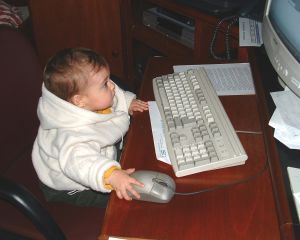
We started out with a few basic rules and have expanded slightly on them. First and probably most important, was the speech about “bad things” on the internet. I explained that just like on TV, there are things on the Internet that children shouldn’t be watching. If they find something they don’t understand, or think is inappropriate they should click Home and go back to Webkinz.
This is good advice, in the main. Nothing takes the place of more involved parents who actually are watching, talking, listening, communicating. However, you have to be free and omnipresent to make this work. And, I think there are several caveats that the author, Anton Olsen, does not mention.
First, if your kids are little, little, all this talking and communication isn’t going to help them if they see something that is really way beyond their comprehension. I don’t want my eight year old (or my four year old son for that matter) to be exposed to graphic sex just because she went searching for “doll toys” on the internet. That’s why we use a separate account for her on our home computer. She can only visit and add sites (in her Safari browser) as we see fit, and then can switch easily between Webkinz, Club Penguin or SeaPals to her hearts content.
Second, place the family computer, or the child’s computer, in a place where everyone can see and the community becomes the monitor. If your child strays, there is a good chance that nanny, brother, mom or dad might see.
That said, this is a good discussion on an approach for allowing 12+ kids to use the internet for free browsing, school research, and fun, without using software that takes the place of good old-fashioned parenting.